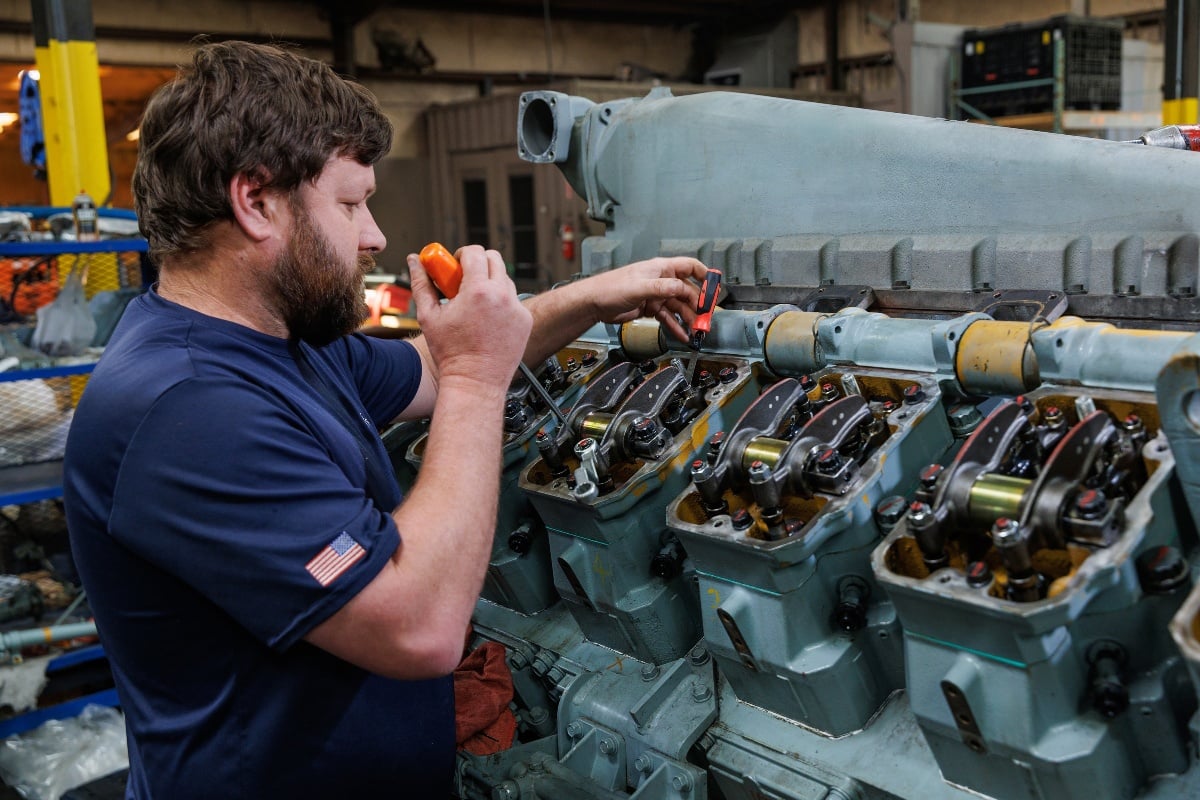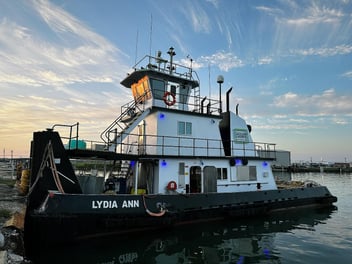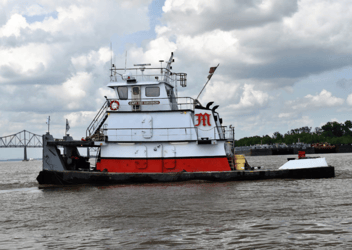Discover the benefits of remanufactured parts for marine power systems, offering cost savings, quality, and environmental responsibility. Learn how they extend engine life and ensure operational success.
Key Takeaways
- Remanufactured parts provide a solution for marine engine maintenance, balancing cost savings with operational needs.
- They offer significant savings without compromising quality, undergoing rigorous testing to meet or exceed original specifications.
- Remanufactured parts can extend the life of marine engines, addressing wear and tear from harsh conditions with parts tailored to withstand such environments, including advancements in materials and coatings.
- The process offers a reliable solution for sourcing parts for models no longer in production, ensuring older vessels remain operational without extended downtimes.
- Operators should prioritize providers with recognized certifications, comprehensive warranties, a strong reputation for quality, and transparency in their remanufacturing process to avoid common pitfalls.
In the marine industry, the longevity and reliability of power systems equal operational success. But achieving balance between maintaining peak performance and managing overhead costs is a continual challenge for operators.
The role of remanufactured parts emerges as a pivotal factor—a solution that bridges the gap between affordability and uncompromised quality. Far from being a mere alternative, these components represent a strategic investment in the lifecycle of marine engines, embodying a fusion of environmental responsibility and economic wisdom.
Let's explore the depth and breadth of advantages that remanufactured parts bring to the table, setting the stage for a deeper dive into how they redefine maintenance practices in the marine sector.
The Value of Remanufacturing in Marine Engine Maintenance
Remanufacturing is a comprehensive system of restoring marine engine components to their original performance specifications. This method has proven instrumental in extending the lifecycle of marine power systems, helping vessels continue to navigate the challenges of the sea efficiently and reliably. Here's a closer look at the value of remanufacturing:
- Restoration to Original Specifications: Unlike simple repairs or refurbishments, remanufacturing involves disassembling the part, cleaning all components, replacing worn or damaged elements, and then reassembling it to meet or exceed the original manufacturing standards.
- Cost Savings: By opting for remanufactured parts, operators can realize significant savings compared to purchasing new components. These savings are not at the expense of quality, but are the result of a more resource-efficient process that leverages the remaining value of the used part.
- Environmental Benefits: Remanufacturing keeps components out of landfills, contributing to waste reduction efforts. It also requires less energy to remanufacture a part than to produce a new one from raw materials, which lowers the carbon footprint of manufacturing. And by reusing materials, the remanufacturing process conserves the raw materials that would otherwise be required to manufacture new parts.
- Quality and Reliability: Remanufactured parts undergo rigorous testing to meet strict quality standards. This process often uncovers and addresses original manufacturing defects, potentially making remanufactured parts more reliable than their brand-new counterparts.
- Certification and Warranty: Remanufactured parts typically come with certifications and warranties that provide additional assurance and support to the operators. This is a testament to their reliability and the faith that manufacturers and suppliers have in the remanufacturing process.
Challenges in Marine Engine Maintenance
Maintaining marine engines presents a set of unique challenges, primarily due to the harsh operating environment and the lifecycle of the components involved. Understanding these challenges is key to appreciating the value that remanufactured parts offer. Here's a closer look:
Wear and Tear in Harsh Conditions
For starters, the omnipresent salt in marine environments accelerates corrosion, affecting engine components significantly. This corrosion can weaken parts, leading to premature failures and reducing the overall lifespan of the engine. Then there’s the constant vibration due to both the engine's workings and the movement of waves. This vibration can lead to stress fractures and loosening of components over time, requiring meticulous attention during maintenance.Wide temperature fluctuations at sea, from freezing conditions to tropical heat, can also stress engine components and affect their integrity and performance.
Remanufactured Solutions
Remanufactured parts are specifically tailored to address these harsh conditions. They undergo rigorous testing and restoration processes in order to withstand the marine environment. For instance, corrosion-resistant coatings and materials are often used in remanufactured parts to extend their service life.
The Dilemma of Obsolete Parts
One of the significant challenges in marine engine maintenance is sourcing parts for models that are no longer in production. As manufacturers update their offerings, parts for older models become scarce, complicating maintenance efforts. The scarcity of obsolete parts can lead to extended downtimes as operators scramble to find suitable replacements, impacting schedules and operational efficiency.
Remanufactured Solutions
By restoring old parts to their original condition, remanufacturing sees that even vessels with obsolete models can maintain their engines effectively. The restoration process involves carefully disassembling the old part, thoroughly cleaning each component, replacing any worn or damaged elements with new ones, and reassembling the part to meet original specifications. Remanufactured parts undergo stringent quality checks so they perform on par with new parts, providing a reliable alternative for maintaining older marine engines.
The Remanufacturing Process Demystified
Understanding the remanufacturing process unveils the meticulous care and detailed work that goes into restoring marine engine components to their original specifications. Here’s a step-by-step breakdown:
Step-by-Step Overview of Remanufacturing
- Initial Assessment: The process begins with a thorough evaluation of the used part to determine its suitability for remanufacturing. This includes checking for wear, damage, and potential failure points.
- Disassembly: Qualified technicians carefully disassemble the part, segregating components based on their condition and potential for reuse or refurbishment.
- Cleaning: Each component is cleaned using advanced techniques such as ultrasonic cleaning or chemical baths to remove all contaminants, residues, and signs of wear.
- Inspection and Repair: Post-cleaning, each part is inspected for damage. Advanced measurement tools are used to assess wear and make sure components meet strict dimensional criteria. Parts that are beyond repair are replaced with new ones.
- Reassembly: Components that pass the inspection and repair phase are reassembled to form the complete part. This process follows assembly guidelines so the rebuilt part meets original equipment manufacturer (OEM) specifications.
- Testing: The remanufactured component undergoes rigorous testing under conditions that simulate its operational environment, demonstrating reliability in the field.
- Certification: Once it passes all tests, the part is certified as remanufactured, differentiating it from lesser refurbishments or repairs. It is then ready to be returned to the market with a warranty that often matches or exceeds that of new parts.
Remanufacturing Technological Innovations
The remanufacturing process has significantly benefited from technological advancements, equaling higher standards of quality and efficiency:
- Precision Machining: Modern CNC (Computer Numerical Control) machining allows for the precise restoration of component surfaces and geometries.
- Advanced Testing Techniques: From digital pressure testing to 3D scanning, technology facilitates comprehensive testing of remanufactured parts.
- Quality Control Software: The use of sophisticated software systems helps in tracking each part through the remanufacturing process.
- Material Science: Innovations in materials, including the use of new alloys and coatings, enhance the durability and performance of remanufactured parts.
Navigating the Market for Remanufactured Parts
Selecting the right provider for remanufactured parts is crucial for the reliability and longevity of marine engines. Here are key factors operators should consider, along with guidance on avoiding common pitfalls in the process:
How to Choose a Provider for a Remanufactured Engine
- Certifications: Recognized certifications indicate that the provider meets industry standards for quality and process control in remanufacturing.
- Warranty Offers: Evaluate the warranty provided with remanufactured parts. A robust warranty similar to or better than that of new parts signifies confidence in the product's quality and reliability.
- Reputation: Testimonials, case studies, and industry reviews can offer insights into the provider’s reliability and the quality of their remanufactured parts.
- Technical Support: Consider the level of technical support and customer service offered so you have assistance when needed.
- Transparency: Seek providers who are transparent about their remanufacturing process. Understanding the steps involved can help you assess the quality of the remanufactured parts.
- Inventory and Availability: Ensure the provider has a sufficient inventory of remanufactured parts and can guarantee timely delivery to minimize downtime.
Avoiding Pitfalls of Remanufactured Parts
- Refurbished vs. Remanufactured: Understand the difference. Remanufactured parts are completely disassembled, inspected, repaired, or replaced, and tested to meet original specifications, while refurbished parts may have had only minor adjustments or repairs.
- Quality vs. Price: Be wary of prices that seem too good to be true. While remanufactured parts offer cost savings, extremely low prices may indicate compromises in the quality or completeness of the remanufacturing process.
- Incomplete Reassembly: Remanufactured parts should be fully reassembled using all necessary new components. Some providers cut corners by not replacing all wear-prone parts.
- Lack of Testing: Confirm that the parts have undergone comprehensive testing. Adequate testing is critical for the part's performance and reliability.
- Unverified Sources: Purchase remanufactured parts from reputable and verified sources to avoid counterfeit or substandard components.
Embracing Remanufactured Parts in Marine Operations
Choosing remanufactured engine parts strikes an essential balance, blending cost savings with the uncompromised quality and environmental responsibility. These parts extend engine life and maintain reliability under the harsh demands of the sea. Operators benefit from the economic advantages without sacrificing performance, aligning with sustainable practices by reducing waste and conserving resources.
The choice of a reputable provider, marked by certifications and solid warranties, is key to navigating the market successfully. Through remanufactured parts, the marine industry advances towards a future where operational efficiency, reliability, and ecological stewardship sail in unison.





